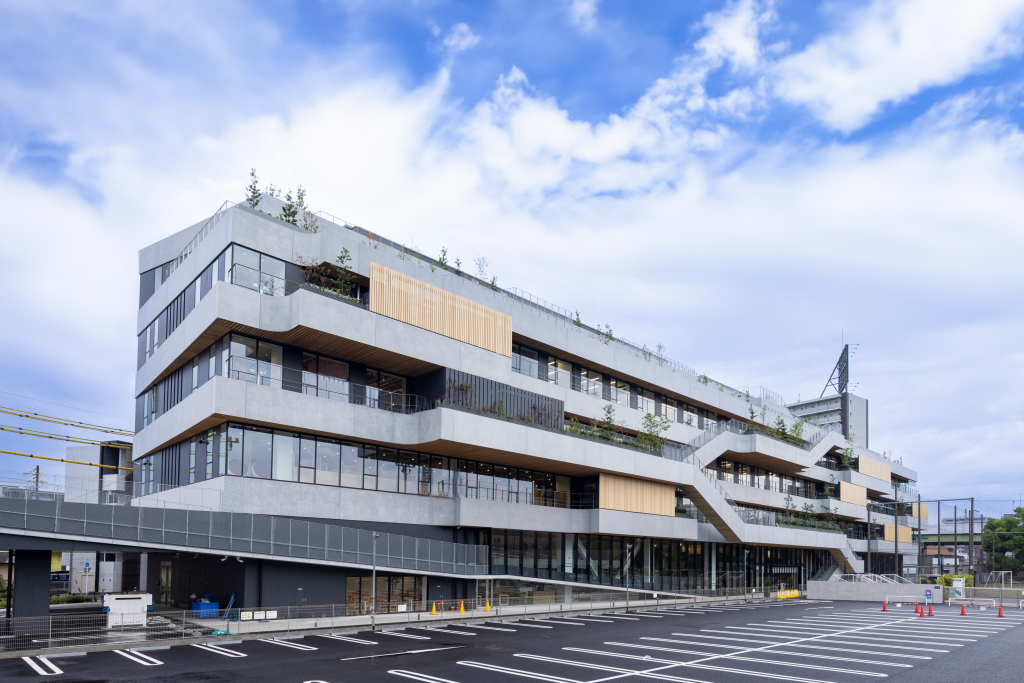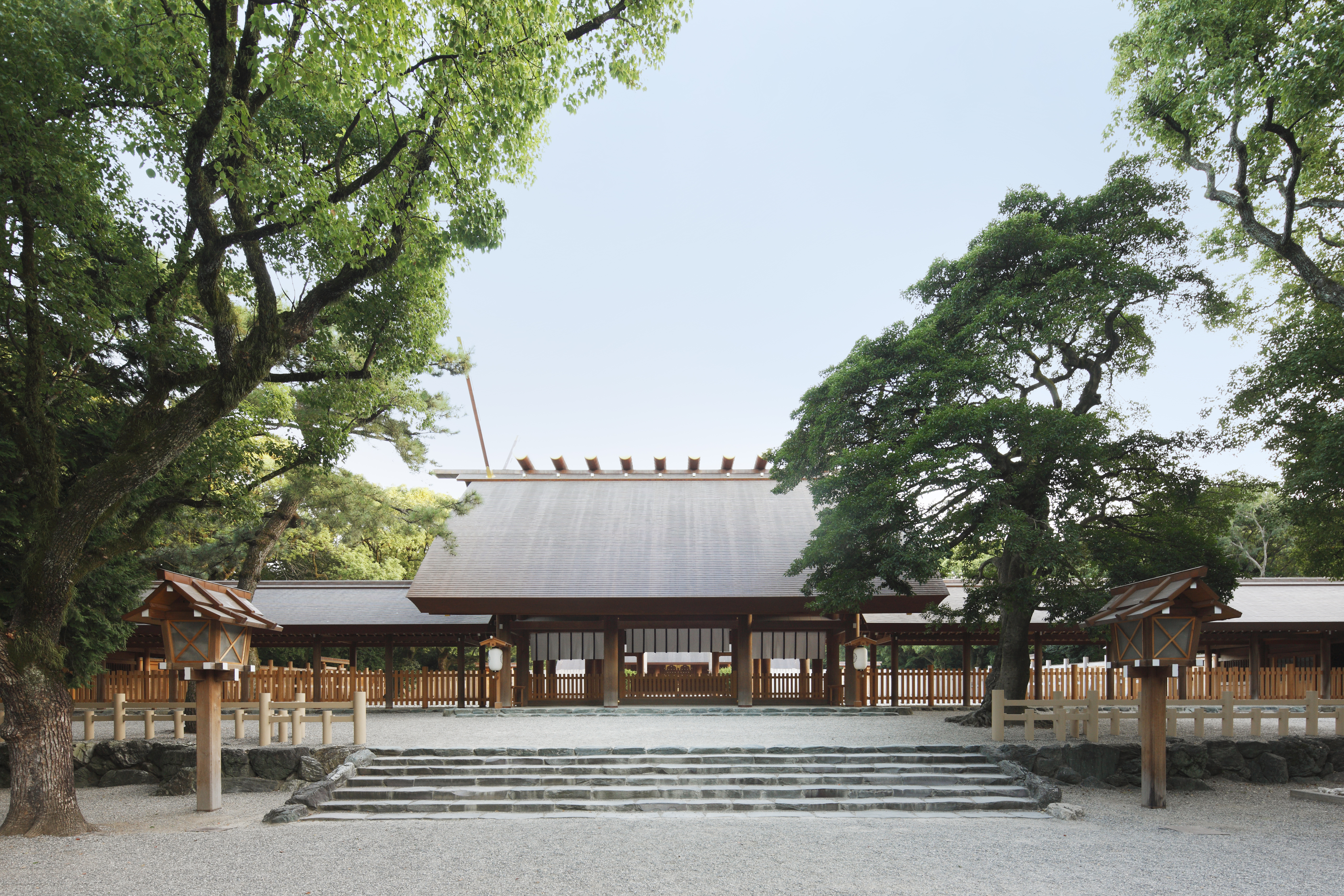OVERVIEW
- Date
- Thursday, November 20–Friday, November 21, 2025
- Place
- Chubu Region
- Participants
- 8 participants.
(Only one reporter or one photographer from each company, but two participants from each TV team will be acceptable.)
- Theme
- Central Japan, the No. 1 Hub for the Manufacturing Industry in Japan—Becoming a Global Center Creating New Value
Purpose of Tour
The Chubu region, made up of prefectures including Aichi, Gifu, Mie, and Shizuoka, is a hub for the manufacturing industry to an extent rarely seen worldwide, including industries such as automobile, aerospace, robotics, textiles, and ceramics. Since the Meiji era (1868–1912), many global companies have started from the region, and it has helped drive growth in the Japanese economy from the post-war economic miracle up until today.
While being supported by powerful local industries, the Chubu region has faced issues when it comes to innovation and starting new businesses. A turning point came in 2020. Industry, universities, and local governments in the Chubu region collaborated to form the Central Japan Startup Ecosystem Consortium in order to support local startups. In July of the same year, Aichi Prefecture, Nagoya, and Hamamatsu were chosen for the Cabinet Office’s Global Hub Cities (2020–2024) startup ecosystem. In June of this year, Mie, Gifu, and Shizuoka were also chosen for the second round of Global Hub Cities (2025–2029), and building infrastructure for innovation creation using an even broader network is accelerating. With these actions, the Chubu region has been aiming to develop unique competitiveness not seen in other regions by connecting its strength in the manufacturing industry with pioneering technology from startups, in order to build its reputation as an internationally respected model for innovation.
Aichi Prefecture, which plays a central role in these efforts, saw the opening of STATION Ai, one of the largest open innovation hubs in Japan, in Nagoya in October 2024. With seven floors above ground and a total floor space of 23,000 square meters, it was built and is operated by STATION Ai Corp., a wholly-owned subsidiary of Softbank. As of October 2025, approximately 600 startups and 400 partner companies have registered with STATION Ai, and it is being actively used, with approximately 1.000 pitch events, seminars, and forums having been held there. In February 2025, the first TechGALA Japan received ample attention as a global event gathering together approximately 5,000 people, including from startups in Japan and abroad, business enterprises, and investors. The second event, TechGALA Japan 2026, is planned for January 27–29 next year, and there are growing hopes for cultivating a startup climate and growing the startup population.
◆The tour will visit Aichi Prefecture on the first day, and cover two startups in the medical and nursing care fields based out of STATION Ai. On the second day, the tour will visit Hamamatsu, Shizuoka, known for its industries related to optics technologies, and cover a company that aims to prevent workplace accidents in factories with unique LED lighting devices, as well as a startup using unique AI video dialogue technology to pass on the memories of war and disasters to the next generation. The tour will also cover initiatives to support corporate innovation and the creation of new industries through a collaboration between industry, academia, government, and finance, and the appeal of the region drawing in entrepreneurs and investors from throughout Japan and the world.
Tour Details
1. Central Japan Startup Ecosystem Consortium
The Central Japan Startup Ecosystem Consortium is a large urban area consortium consisting of multiple cities in four Chubu prefectures and collaboration between industry, academia, government, and finance. It is made up of 327 companies, organizations, and universities, including the Central Japan Economic Federation, Nagoya University, Aichi Prefecture, the City of Nagoya (which acts as its secretariat), the City of Hamamatsu, Gifu Prefecture, Mie Prefecture, and Shizuoka Prefecture. The consortium aims to create a global network hub where diverse startups from Japan and worldwide gather by fusing the Chubu region’s manufacturing techniques with the innovate technology and business models of the world’s startups. The entire region is working together to educate entrepreneurs in collaboration with universities and research institutes, support startups, achieve social implementation, co-create with businesses, and attract foreign companies.
◆Mr. Toshio Sumi, Director, Startup Support Division, Innovation Promotion Department, Economic Affairs Bureau, City of Nagoya will give an overview of the consortium and future plans considering the second round of selections for Global Hub Cities, as well as discussing Nagoya’s appeal as a business city and hopes for TechGALA Japan 2026.
2. UBeing Co., Ltd./CEO Taiki Fukushima
—Developing the Taste Adjustment Device umaiNa, Using Electricity To Make Low-salt Meals Tastier
-

[Photo courtesy of UBeing Co., Ltd.]
After a young patient with high blood pressure suffered from a cerebral infarction and died in hospital from a brain hemorrhage, Dr. Taiki Fukushima, CEO of UBeing, grew painfully aware of the importance of preventative medicine. Having also seen patients lose the joy of eating due to low-salt food not tasting good, he founded a startup originating from Nagoya University students in 2022 along with Dr. Kazuma Aoyama, a leading researcher in the field of electric taste. The aim of the company is to both be healthy and have tasty food, creating a world where everyone can enjoy meals until the end of their life. The taste adjustment device umaiNa which UBeing developed enhances the flavor of food by stimulating the skin by your mouth with electricity. The benefits compared to similar existing products are that the change to flavor lasts, and that it can be used with all types of foods. It is also anticipated that this technology can be used in the medical and aerospace industries.
◆The tour will hear from Dr. Taiki Fukushima, a medical doctor working in clinical practice while also developing the taste adjustment device umaiNa as the CEO of UBeing Co., Ltd., about its applications in preventative medicine, collaborations with hospitals, nursing facilities, and the food industry, and future plans for using it in space.
3. NAGARA Inc./Head of Marketing Ryosuke Kawahara (First-Year Student in National Institute of Technology (KOSEN), Toyota College Advanced Course)
-

[Photo courtesy of NAGARA Inc.]
—Automating Record Keeping with Voice AI: Changing the Future of Nursing Care The nursing care industry, which is facing a serious labor shortage due to the aging population, is expected to be short approximately 690,000 workers by 2040. In light of this issue, a student team at the National Institute of Technology (KOSEN), Toyota College* focused on how approximately 30% of a nursing care worker’s hours were spent on record keeping, and developed the audio-based nursing care record keeping AI service Nagara Kaigo to reduce their workload by automatically generating records based on the conversations between care workers and users. This innovative initiative won the grand prize at the 6th National KOSEN Deep Learning Contest (DCON 2025) held earlier this year, winning one million yen in startup funding. Using those winnings, NAGARA Inc. was established on July 1 this year, and registered at STATION Ai. Having also won at another pitch contest held later, there are high hopes for the future of this startup.
◆Mr. Ryosuke Kawahara, who has been in charge of marketing for NAGARA Inc. since its founding and is the one who applied to DCON 2025, will provide the tour with a demonstration of Nagara Kaigo, which was developed based on inspiration from experiences CEO Itsuki Okada had with his family. Mr. Kawahara will also discuss the company's future plans, working to solve the nationwide social issue of a shortage of nursing care workers with support from a collaboration between industry, academia, government, and finance, such as a business agreement in Toyota and Aichi Prefecture with Fukujuen, a social welfare corporation.
*Colleges of Technology (KOSEN) are five-year higher education institutions with the goal of educating practical and innovative engineers. There are a total of 58 national and private KOSEN in Japan, with approximately 60,000 students in total. With an emphasis on experiments and practical experience, they support Japanese manufacturing by training engineers who have both theory and practical experience.
4. A Town and Shrine Moving Forward Together—Invigorating the Atsuta Area/Professor Akio Mizuno, Nagoya Gakuin University Faculty of Contemporary Social Studies
Atsuta Shrine, a famous tourist attraction in Nagoya, receives approximately seven million visitors annually, one of the highest amounts for a shrine in Japan. The shrine houses the Kusanagi no Tsurugi, one of the three Imperial Regalia, and is known for Oda Nobunaga praying there for victory before the Battle of Okehazama (1560). Although many tourists visit from Japan and abroad, in recent years many of the local stores have shut down due to the aging population, and buildings have been aging as well, so visitors to the shrine have been spending less time in the surrounding area. In order to ameliorate this situation, the Atsuta Gaien Project was started by the local government and local businesses in order to invigorate the area around Atsuta Shrine. [Photos courtesy of Atsuta Shrine]
In addition to the Atsuta nagAya commercial facility opening by Jingu-mae Station in September 2024, the Shiki Theatre Company’s new Nagoya Shiki Theatre is planned to finish construction next summer north of the station. Local beauty device manufacturer MTG, known for brands such as ReFa, will also move its head office to the area in 2027, with plans to open a museum, a workshop where visitors can make Seto ware, and a café for both tourists and local residents to use.
-
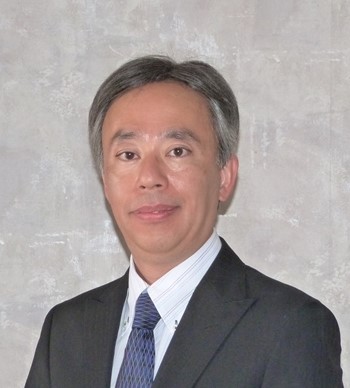
[Photo courtesy of Professor Akio Mizuno]
-

-

◆The tour will be guided around the Atsuta Shrine area by Professor Akio Mizuno of the Nagoya Gakuin University Faculty of Contemporary Social Studies, who plays a central role in the Atsuta Shrine Area Platform public-private organization and is closely involved in initiatives to stimulate the Atsuta area, and will hear from him about the attractions of the area around the shrine and his thoughts on future development.
5. Beginning of Regular e-Palette Route by Aichi Prefecture
-
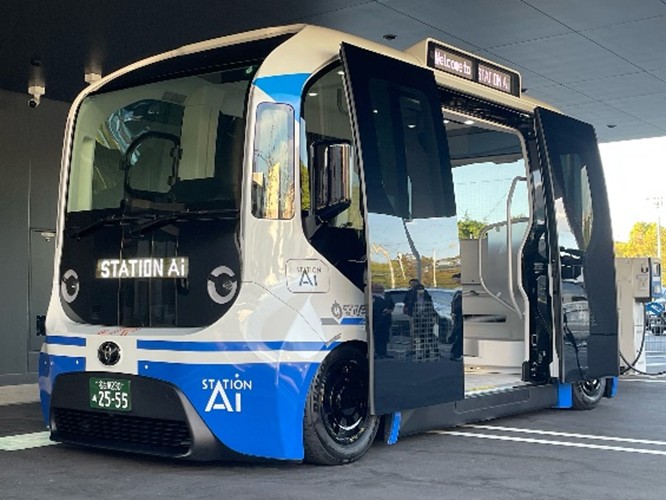
[Photo courtesy of Aichi Prefecture]
Based on its Aichi-Startup Strategy (made in October 2018), Aichi Prefecture has been seeking to create innovation with startups as the catalyst. As part of these efforts, it will be the first local government in Japan to introduce the e-Palette, a next-generation mobility option developed by Toyota, with a regular route beginning on November 10, 2025. The e-Palette is a battery EV with a spacious interior that can be used for mobility services such as transportation, logistics, and sales of goods. With a low floor, wide door, the ability to adjust the vehicle’s height, and a ramp, it can meet the transportation needs for a wide range of people. Operated by JR Tokai Bus, the route will connect STATION Ai and Nagoya Station via public roads, mainly along Wakamiya Odori Street, for six return trips per day carrying up to seven passengers. *A driver will operate the vehicle manually.
◆The tour will listen to a briefing at the Nagoya Station e-Palette stop, and have the opportunity to photograph/film the exterior of the e-Palette. *Since it will be in operation on its regular route, it will not be possible to enter the vehicle.
6. From a Tradition of Craftsmanship to a Startup Hub—Hamamatsu City Industrial Department Startup Promotion Division/Director General Tatsuhiro Doi, Startup Promotion Division
Hamamatsu, a city with a population of 790,000 located in the west of Shizuoka Prefecture, has the highest population in the Chubu region after Nagoya. Known for being home to the head offices of multiple major worldwide companies such as Suzuki, Yamaha, and Hamamatsu Photonics, the city has long supported Japan’s manufacturing industry. Despite having been called the “city of startups” in the past, at one point the rate of founding businesses in Hamamatsu fell below the national average. Concerned about this trend, former Hamamatsu Mayor Yasutomo Suzuki (now governor of Shizuoka Prefecture) started initiatives in 2016 to create a hub for innovation in Hamamatsu similar to Silicon Valley by supporting startups. Under Mr. Yusuke Nakano, the current mayor of Hamamatsu, unique support policies have been implemented, such as the Fund Support Project, Proof of Concept Support Project, and Hamamatsu Regional Startup Collaboration Promotion Project, with the goal of creating a startup ecosystem where “startups are created, gather together, and grow along with the region.” With this support, a foundation has been created to encourage the growth of startups, and a climate is being developed to give rise to new businesses.
◆The tour will visit Hamamatsu, one of the original members of the consortium and a pioneer in creating innovation in the Chubu region, and hear from Mr. Tatsuhiro Doi, director general of the city’s Startup Promotion Division, about an overview of startup support in the city, the support system, and its unique characteristics, as well as the latest local trends in startups. He will also talk about the appeal of Hamamatsu, from its cultural background of the local “yaramaika spirit” (yaramaika is a term in the local dialect referring to an enterprising spirit or having drive).
7. SILVACOMPASS INC./CEO Haruhiko Yasuda
-
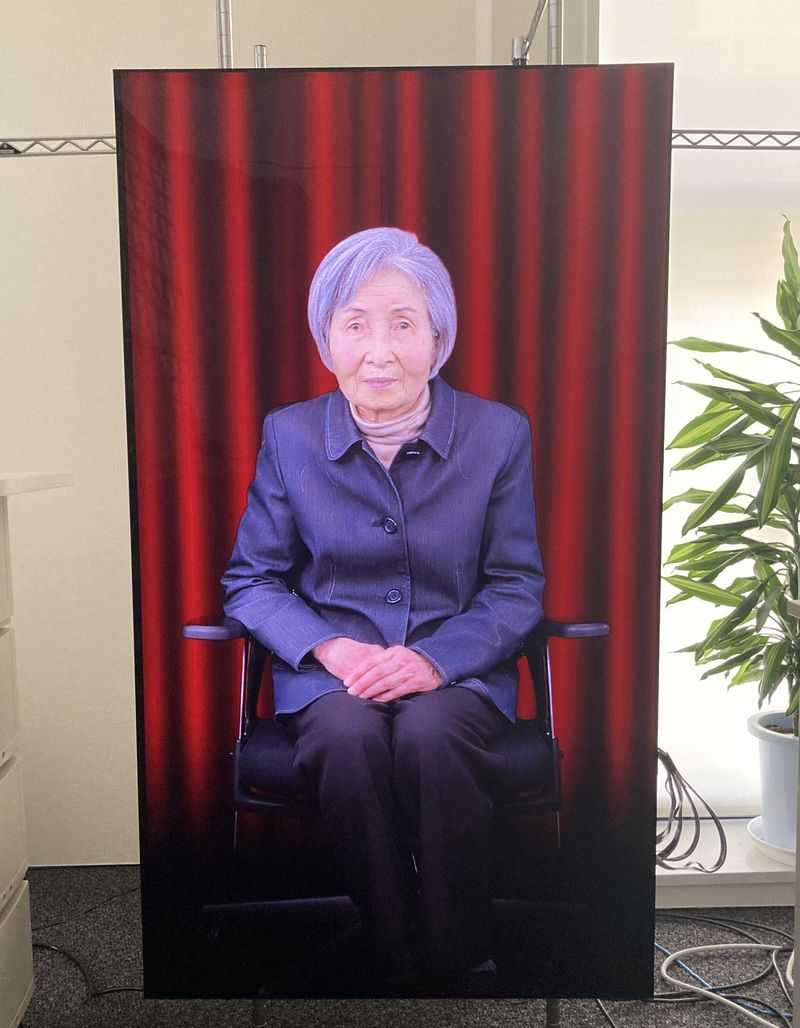
[Photo courtesy of SILVACOMPASS INC.]
-

SILVACOMPASS is a startup founded in 2019 developing and selling an AI video dialogue system combining AI and video control technology. CEO Haruhiko Yasuda began developing the system after being asked by the director of the Nagasaki National Peace Memorial Hall for the Atomic Bomb Victims whether there was some way to make it possible to interact via dialogue with atomic bomb survivors. The system records a person and makes a “real avatar” of them, making it seem like you are speaking with the real person. With this year marking the 80th anniversary of the end of World War II, the system was used in peace classes in junior high schools in Hamamatsu to pass on memories of the war as an atomic bomb survivor dialogue system. In August, a cloud version of the atomic bomb survivor dialogue system was released, and it was made available for free to schools throughout Japan. This technology is being adopted in the medical, tourism, and service industries.
◆The tour will visit the Co-startup Space & Community FUSE where SILVACOMPASS’s office is located, and be shown the facility by FUSE staff. SILVACOMPASS CEO Haruhiko Yasuda will then provide a briefing on the company’s business at a conference room in FUSE. Afterwards, the tour will visit the Hamamatsu Reconstruction Memorial Hall in Chuo, Hamamatsu, where the atomic bomb survivor dialogue system is a permanent exhibit, and hear from Mr. Yasuda about how the system functions and its unique features, as well as having the opportunity to try speaking with the AI about the air raids on Hamamatsu.
-
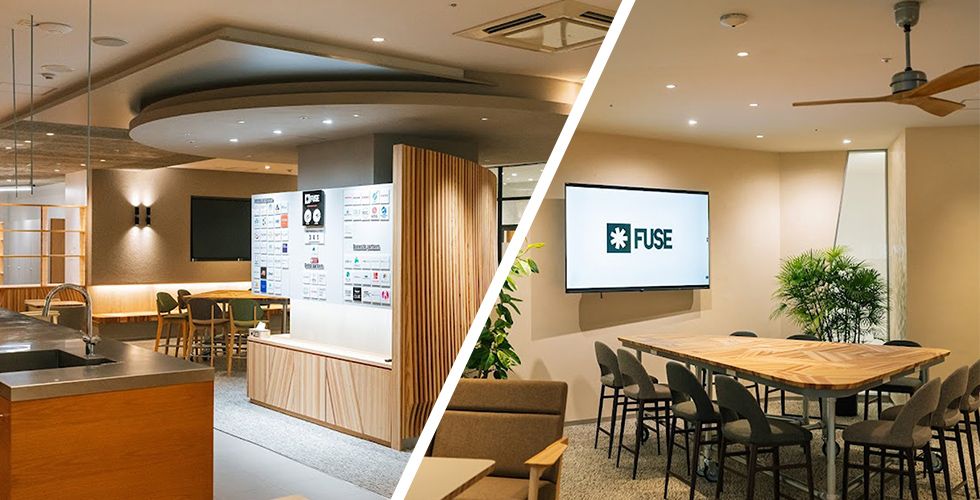
[Photo courtesy of Co-Startup Space & Community FUSE]
*The Co-startup Space & Community FUSE is a membership-based shared space which opened in 2020, operated by the local Hamamatsu Iwata Shinkin Bank. Located in central Hamamatsu, it has coworking and event spaces, a fabrication space with modeling equipment, and a kitchen. A new type of community for people involved in startups and supporting new businesses has been formed here.
8. Pi PHOTONICS, INC./CEO Takahiro Ikeda
Pi PHOTONICS is a startup in Hamamatsu founded in 2006 which manufactures and sells optical equipment. Having worked at Hamamatsu Photonics and as a visiting researcher at the Massachusetts Institute of Technology, Dr. Takahiro Ikeda, CEO of Pi PHOTONICS, founded the company while still studying at the Graduate School for the Creation of New Photonics Industries. HOLOLIGHT, a new type of LED light developed by the company, is a unique product that can form patterns using light which is easily visible from a distance. In areas with loud noises where audio warnings would be difficult to hear, such as factories, dangerous zones can be clearly indicated in a visible manner, contributing to preventing workplace accidents. Seeing the effectiveness of HOLOLIGHT, major steel and automobile manufacturers have been implementing it in their factories. Compared to spotlights which use halogen lamps, HOLOLIGHT has a lifetime that is approximately 200 times longer while using approximately one-fifth of the electricity and generating less heat, also making it safer. This technology has been patented in Japan, the US, China, and the EU, and HOLOLIGHT has been internationally recognized for its advanced technology. With the aim of further expanding into overseas markets, Pi PHOTONICS is also actively hiring foreign workers.
HOLOLIGHT has also been found to be effective against starlings, large flocks of which have been causing issues in cities throughout Japan due to the noise and droppings. HOLOLIGHT CHECKERS, a portable LED light for preventing bird nuisances, takes advantage of starlings sensitivity to light to safely drive them away without needing physical contact. Proof of concept tests are periodically carried out around Hamamatsu Station, and a significant decline in the number of starlings in the area has been confirmed.
-

[Photos courtesy of Pi PHOTONICS, INC. *The left photo shows HOLOLIGHT actually being used in a factory]
-

◆Pi PHOTONICS CEO Takahiro Ikeda will explain about the development of HOLOLIGHT and its unique features, as well as its diverse applications. The tour will also watch an experiment near Hamamatsu Station of shining light on trees with flocks of starlings.
*The Graduate School for the Creation of New Photonics Industries is a unique university in Japan, with Hamamatsu Photonics playing a leading role when it was founded in 2005 with the goal of educating entrepreneurs to apply optics technology to create new industries. In the past 20 years, 137 students have studied there, and 38 companies founded.
Tour Itinerary
1. Dates:
Thursday, November 20–Friday, November 21, 2025
2. Schedule:
[Thursday, November 20]
- 06:45
-
Meet at Tokyo Station
- 07:00-08:38
-
Tokyo Station→Nagoya Station (Nozomi 107)
- 09:30-10:00
-
Central Japan briefing
- 10:15-11:30
-
UBeing Co., Ltd.
- 11:35-11:50
-
STATION Ai Corp.
- 11:55-12:55
-
NAGARA, Inc.
- 13:30-14:15
-
Lunch break
- 14:15-15:15
-
Tour area around Atsuta Shrine, Atsuta nagAya
- 16:00-16:40
-
Photograph/film the exterior of the e-Palette at the Nagoya Station
- 17:08-17:53
-
Nagoya Station→Hamamatsu (Kodama740)
- 18:00
-
Arrive at hotel (in Hamamatsu)
[Friday, November 21]
- 08:20
-
Leave hotel
- 09:00-10:00
-
Hamamatsu City Start-Up Promotion Division
- 10:40-12:20
-
SILVACOMPASS INC.
- 13:00-13:55
-
Lunch break
- 14:45-16:15
-
Pi PHOTONICS INC.
- 17:00-17:30
-
(Travel to Hamamatsu Station area) See portable LED light used to prevent problems by starlings
- 18:17-19:42
-
Hamamatsu Station → Tokyo Station (Hikari 516)
- 19:42
-
Tour ends at Tokyo Station
3. Qualification:
Bearer of the Ministry of Foreign Affairs of Japan Press Registration Card (in principle)
4. Cost:
10,000 yen per person, including transportation, accommodation (breakfast included)
*Information on payment and cancellation fee will be provided to participants.
*Participants will be required to pay their own transportation costs to the meeting place before the tour, and after the tour ends
5. Participants
8 participants.
(Only one reporter or one photographer from each company, but two participants from each TV team will be acceptable.)
*Participants will be determined by the tour organizer.
6. Please be sure to confirm and agree to the following before applying
6-1. Basic Information
(1) This tour is organized by Japan External Trade Organization (JETRO) Nagoya Office and run by the FPCJ.
(2) The schedule is subject to change without notice.
(3) This tour will require participants to bear a part of the cost but is not a profit-making venture.
(4) Japan External Trade Organization (JETRO) Nagoya Office and the FPCJ take no responsibility for any accidents, injuries, illness, or other problems which occur during the tour.
(5) There may be some restrictions on photographing and filming at the tour sites. Please follow the instructions of the staff in charge.
(6) This press tour is intended to provide opportunities for news coverage. We request that all participants send a copy of the content of their coverage (article, video, or audio in the case of radio) to Japan External Trade Organization (JETRO) Nagoya Office through the FPCJ after their reports are published or aired. When your report is in a language other than English or Japanese, we also ask you to provide a summary in English or Japanese. By submitting your application, we assume that you have agreed to these conditions.
6-2.Handling of Personal Information
When applying for the tour, you agree to the below:
*Regarding the handling of personal information, the press tour organizers and operators will respect Japan’s Act on the Protection of Personal Information and all other laws and guidelines on the protection of personal information and handle personal information appropriately.
(1) The tour operators will, when there is a need to do so for the press tour, provide the personal information provided when applying (organization name, personal name, etc.) to other parties in the following cases:
-To arrange travel or insurance through travel agencies (Information provided to: Travel agencies, accommodation operators, transportation operators, insurance companies)
-To ensure smooth operations during the tour (Information provided to: Interpreters, stops on the tour, interviewees)
(2) The tour operators, to ensure smooth operation of the tour, will share the personal names and organization names of applicants with the tour organizers.
6-3.Recordings by Press Tour Organizers or Operators During the Tour
When applying for the tour, you agree to the below:
(1) For the record-keeping purposes, the tour operators may film or photograph the tour while it is happening. The copyright holders for these photos or videos will be the tour organizers.
(2) Photos, videos, or articles of the press tour may be uploaded to websites or social media accounts operated by the organizers or operators.
(3) The likeness or voice of participants may appear in the abovementioned photos or videos, but you agree to their use by the organizers or operators.
7. FPCJ Contacts:
Ishida(Ms.), Hamada(Ms.)
Media Communication and Planning Division
(Tel: 03-3501-5251、E-mail: sc@fpcjpn.or.jp)
*************
◆When applying for the tour, you agree to the following conditions◆
- Press tours have participants from multiple media organizations, and interviews, filming, and photographing are generally carried out jointly. There is no guarantee that you will be able to perform individual interviews or take individual videos at any of the stops on the tour.
- You must follow the instructions of the tour organizers and operators regarding the tour schedule, timing, and restrictions on taking videos or photos. If you refuse to follow instructions, you will no longer be allowed to participate in the press tour from that point on.

